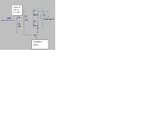p72
Member level 3

Hi,
I have 4-20mA Input circuit with the 200 ohm resistor. The output of this goes into the OpAmp (opa333) which operated on +5V supply.
I would like to design circuit/component which protect my device (opa333) from overvoltage (>5Volt.) (in case if someone applies more than 5volts.).
So that, as I said once 4-20mA current passes through 200ohm resistor, I get the 0.8 to 4.0 volts (my input range).
(I am keeping 1volt margin, so that I am looking to protect OpAmp from overvoltage condition.)
One more thing: - What can I do if someone applies reverse connection?
Any quick solution?
I will appreciate your response.
Thanks in advance.
P72
I have 4-20mA Input circuit with the 200 ohm resistor. The output of this goes into the OpAmp (opa333) which operated on +5V supply.
I would like to design circuit/component which protect my device (opa333) from overvoltage (>5Volt.) (in case if someone applies more than 5volts.).
So that, as I said once 4-20mA current passes through 200ohm resistor, I get the 0.8 to 4.0 volts (my input range).
(I am keeping 1volt margin, so that I am looking to protect OpAmp from overvoltage condition.)
One more thing: - What can I do if someone applies reverse connection?
Any quick solution?
I will appreciate your response.
Thanks in advance.
P72




